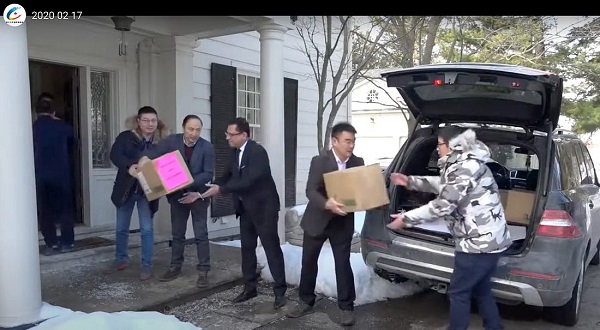Alberta Sheriffs Branch
PM’s Objectionable Gaza Remarks Fuel Misinformation Across Country

News release from B’nai Brith
|
Alberta
Province to expand services provided by Alberta Sheriffs: New policing option for municipalities

Expanding municipal police service options |
Proposed amendments would help ensure Alberta’s evolving public safety needs are met while also giving municipalities more options for local policing.
As first announced with the introduction of the Public Safety Statutes Amendment Act, 2024, Alberta’s government is considering creating a new independent agency police service to assume the police-like duties currently performed by Alberta Sheriffs. If passed, Bill 49 would lay additional groundwork for the new police service.
Proposed amendments to the Police Act recognize the unique challenges faced by different communities and seek to empower local governments to adopt strategies that effectively respond to their specific safety concerns, enhancing overall public safety across the province.
If passed, Bill 49 would specify that the new agency would be a Crown corporation with an independent board of directors to oversee its day-to-day operations. The new agency would be operationally independent from the government, consistent with all police services in Alberta. Unlike the Alberta Sheriffs, officers in the new police service would be directly employed by the police service rather than by the government.
“With this bill, we are taking the necessary steps to address the unique public safety concerns in communities across Alberta. As we work towards creating an independent agency police service, we are providing an essential component of Alberta’s police framework for years to come. Our aim is for the new agency is to ensure that Albertans are safe in their communities and receive the best possible service when they need it most.”
Additional amendments would allow municipalities to select the new agency as their local police service once it becomes fully operational and the necessary standards, capacity and frameworks are in place. Alberta’s government is committed to ensuring the new agency works collaboratively with all police services to meet the province’s evolving public safety needs and improve law enforcement response times, particularly in rural communities. While the RCMP would remain the official provincial police service, municipalities would have a new option for their local policing needs.
Once established, the agency would strengthen Alberta’s existing policing model and complement the province’s current police services, which include the RCMP, Indigenous police services and municipal police. It would help fill gaps and ensure law enforcement resources are deployed efficiently across the province.
Related information
Alberta
New surveillance teams led by the Alberta Sheriffs working with local police in rural communities

More boots on the ground to fight rural crime
Rural crime continues to be a top concern among residents and businesses in rural Alberta, which is why Alberta’s government remains committed to addressing it through enhanced surveillance and other crime reduction initiatives. Alberta’s government invested $4.3 million for the Alberta Sheriffs to put more boots on the ground. This investment supported the establishment of two plainclothes teams – one in northern Alberta and one in southern Alberta – to support police in carrying out surveillance on criminal targets in rural areas.
Both teams are now fully staffed and operational, ready to fight crime in rural areas across Alberta. These rural surveillance teams will work to prevent crime, monitor agricultural theft and work in collaboration with local law enforcement to share intelligence and resources to keep Albertans and their property safe and secure.
“Criminals and organized crime are not welcome in Alberta. Full stop. The addition of two new surveillance teams will further support our law enforcement partners in stamping out criminal activity in Alberta’s rural areas. This is about supporting local investigations to address local crime in our smaller communities. Together, both teams will form another key component of Alberta’s efforts to combat crime and ensure Albertans feel safe at home and in their communities, regardless of where they live.”
The Alberta Sheriffs have an existing surveillance unit that is part of the Alberta Law Enforcement Response Teams (ALERT) and focused mainly on serious and organized crime investigations. The new surveillance teams will fill a gap by helping rural RCMP detachments with local investigations.
“Through their specialized knowledge, training and experience, Alberta’s new surveillance teams are providing another important mechanism in the fight against crime in Alberta’s rural communities. Working in close collaboration with the RCMP and other policing agencies, their efforts will play a key role in gathering evidence and information that will help disrupt crime throughout the province.”
“This announcement by the Alberta government and Minister Ellis is a positive step forward for the residents of Alberta, especially in rural areas. Targeting known criminals is a very effective way to reduce the level of crime taking place and will greatly assist the RCMP who have a vast area to police.”
“We are happy to hear about increased resources being allocated to assist our communities. Addressing rural crime is one of the top priorities of the Alberta RCMP, and our partners at the Alberta Sheriffs already play a vital role in keeping Albertans safe. The creation of these new surveillance teams will help augment our ongoing crime reduction strategies in Alberta communities, and we look forward to working with them going forward.”
The new surveillance teams are part of a suite of measures to expand the role of the Alberta Sheriffs and make Alberta communities safer. Other actions include the expansion of the Safer Communities and Neighbourhoods (SCAN) unit – which uses legal sanctions and court orders to target problem properties where illegal activities are taking place – and the expansion of the RAPID Response initiative with funding for the Sheriff Highway Patrol to train and equip members to assist the RCMP with emergencies and high-priority calls.
Related news
- Fighting rural crime (March 24, 2023)
Multimedia
-

 2025 Federal Election1 day ago
2025 Federal Election1 day agoBREAKING from THE BUREAU: Pro-Beijing Group That Pushed Erin O’Toole’s Exit Warns Chinese Canadians to “Vote Carefully”
-

 Daily Caller1 day ago
Daily Caller1 day agoTrump Executive Orders ensure ‘Beautiful Clean’ Affordable Coal will continue to bolster US energy grid
-

 Business1 day ago
Business1 day agoChina, Mexico, Canada Flagged in $1.4 Billion Fentanyl Trade by U.S. Financial Watchdog
-

 2025 Federal Election1 day ago
2025 Federal Election1 day agoTucker Carlson Interviews Maxime Bernier: Trump’s Tariffs, Mass Immigration, and the Oncoming Canadian Revolution
-

 COVID-1920 hours ago
COVID-1920 hours agoTamara Lich and Chris Barber trial update: The Longest Mischief Trial of All Time continues..
-

 2025 Federal Election23 hours ago
2025 Federal Election23 hours agoAllegations of ethical misconduct by the Prime Minister and Government of Canada during the current federal election campaign
-

 Energy21 hours ago
Energy21 hours agoStraits of Mackinac Tunnel for Line 5 Pipeline to get “accelerated review”: US Army Corps of Engineers
-

 Business1 day ago
Business1 day agoDOGE Is Ending The ‘Eternal Life’ Of Government







